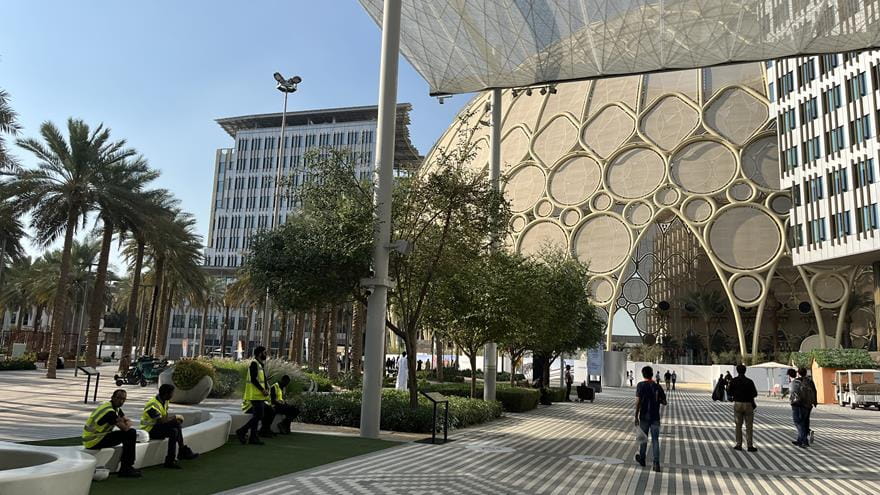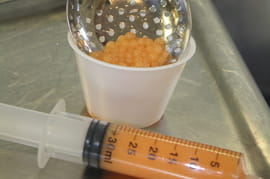“Modernist Cuisine” Culinary Arts Course Gives Students a Glimpse Into the Science of Food

- Students, Faculty Represent Drexel University at COP28 Through Dialogue and Research
- STAR Summer Showcase Exhibits Advanced Research From 121 Undergraduate Students
- Drexel Students, Research Community Made Their Mark on 2023 AAAS Meeting
- Drexel Students Write Songs About Biodiversity for ‘Anthems for the Anthropocene’ Contest

In Drexel’s prep kitchens, students are conducting edible science experiments.
Chef Edward Bottone is in one of the prep kitchens on Drexel’s campus with his students, who are wielding plastic syringes. At first, the scene resembles something you would see in a laboratory—but these students are preparing edible delights, and exploring the science behind food, in the new “Modernist Cuisine” course in the Culinary Arts program.
Modernist cuisine (also called molecular gastronomy) has been on the culinary map for quite some time. It’s particularly challenging because not only do the students need to understand the chemistry that goes into the food…they’ve got to make it taste delicious, too. Bottone says that the concept is widely employed in fine restaurants, and he wants his students to be skilled in these concepts, which can sometimes seem more science experiment than gastronomic delight.
The course, which debuted at the start of the spring term, focuses on three key techniques: foams, spherification, and sous vide.
The results of students' work in foams (in the syringe) and spherification.
Foams are flavor-infused puffs that dissolve immediately upon hitting the tongue, but leave a lingering flavor that mixes with other components of the dish. (Those syringes the students were using the test kitchen? Foam was carefully spooned into them as an accompaniment to a dish; the foam was literally meant to be injected into the diner’s mouth.)
Spherification is the process of taking a liquid and solidifying it into tiny little beads that resemble caviar, for a new way to experience flavor. The beads burst when you bite down on them, releasing an intense rush of flavor in the mouth.
Finally, sous vide is a technique that involves compressing food into a bag and removing the air to eliminate bacteria. The absence of bacteria then allows the food to be cooked at low temperatures for a long time in a water bath. The end result: food that’s cooked perfectly throughout. Bottone says this is an extra flavorful way to marinate meats; when the marinade is put into the bag with a cut of meat, it permeates deep into the protein when the air is removed. In traditional marinades, the sauce or spice typically just sits on the surface of the meat.
Each week is dedicated to one of these topics, with a few additional practices sprinkled throughout the course, like freezing food with liquid nitrogen or drying with maltodextrin.
Chef Bottone says these techniques are all new ways of deconstructing an ingredient and reconstructing it into something entirely new. This shakes up flavors, and gives tastebuds a thrill.
“I want to inspire my students to take specific flavors and do new things with them,” Bottone says.
Plus, it’s just as much about the experience as it is about the food. He says diners will remember the first time they shot a syringe full of wasabi foam into their mouths.
So far, Bottone says the course is a success. “The students are having a blast, and I’m learning a lot from them,” he says.
This article originally appeared in the Goodwin Live Blog .
In This Article
Drexel News is produced by
University Marketing and Communications.